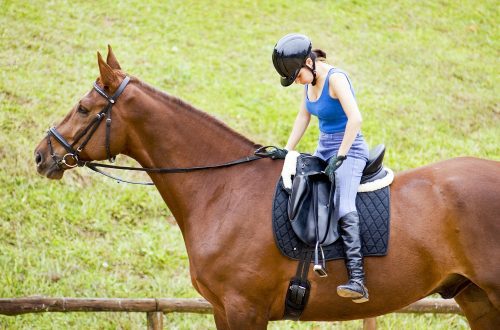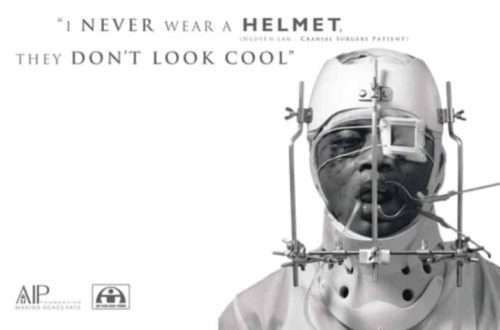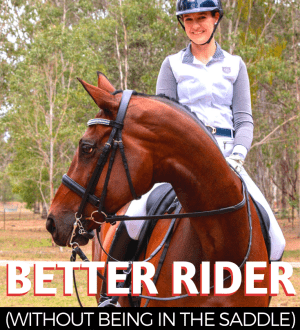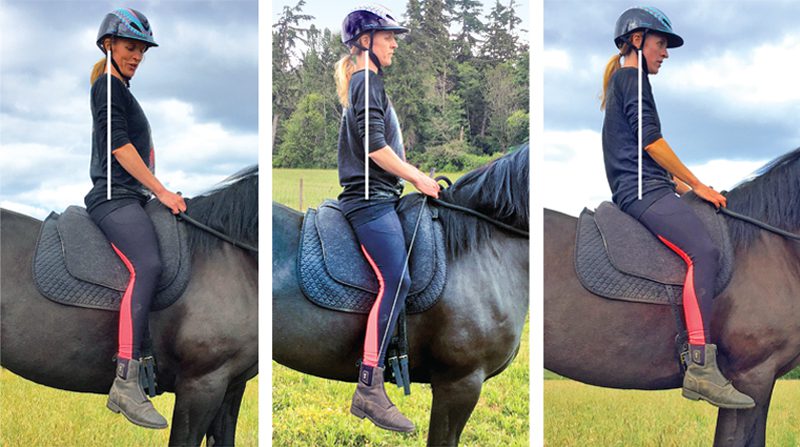
The importance of posture in riding
The importance of posture in riding
Riding posture is the basis of our effect on the horse, it is what makes the difference between rider and rider.
The rider’s postural strength can be compared to the banks of a river that direct the flow of water. So the rider directs the power of the horse forward, creating a corridor with his legs.
The rider’s challenge
Before we can understand the importance and function of posture in riding, we must be aware of the unique physical challenges that confront any rider who mounts a horse. First of all, let us remember that as soon as we sit in the saddle, we lose our own point of support (stop on the ground) and find ourselves entirely at the mercy of the horse’s movement. Also, keep in mind that a horse weighs about 10 times the average rider.
So, if we decide that the purpose of dressage is Not only is to gain complete control over the horse, but also in interaction with him, and if (and this is a very important if) we want to achieve this not only by using the reins as the main controlling tool, then we must have something else that will allow us to influence the horse.
This something becomes the development of posture. Posture affects the fit, the strength of which allows us to keep our body in a certain position when moving on a horse. Have you ever watched gymnasts doing exercises with rings? They seem to float in the air against the force of gravity. This is achieved through enormous postural muscle strength.
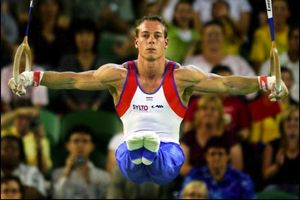
Also in horseback riding. We must be able to control the postural strength of our body so that we can guide and control the horse with our body and not with the reins.
The influence of correct posture
There are many variations on how a rider’s postural strength, posture, changes the horse’s natural movement, creating interaction and connection.
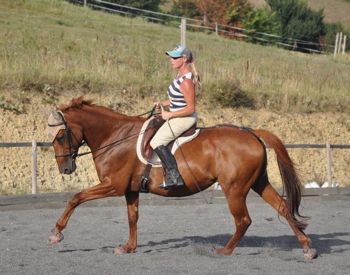
When the horse moves correctly, engaging the body, the power and energy from his hind legs is transferred through his back to the reins and back into the hands of the rider.
When a horse moves naturally, much of the energy generated by its hind legs is lost. This happens for two main reasons:
- Lateral swings of the horse’s back result in a loss of energy from the hind legs. The flow of energy does not move purposefully and dissipates.
- The horse drops the hindquarters instead of bringing it deeper under the body. As a result, the back sags and energy does not pass through it. We can clearly see this in the photo below.
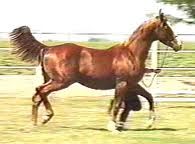
The rider’s job is to use his body to prevent the loss of energy due to these causes.
If the horse moves in connection, an annular flow of energy is created that is necessary for successful riding. You will need to connect your body to the movements of the horse, and then use postural strength to balance the horse’s thrusts and direct the energy forward through his back. You cannot achieve this by holding the reins and pushing with the spurs. The only way is to improve posture. This will give your body enough strength to stay in the right place, and not “dangling” from every push of the horse’s movement.
If you can develop your body properly, you will be able to freely use the controls to guide the horse. But if you continue to roll from side to side as you move, if your pelvis gets in the wrong position, then no matter how much you work on perfecting your controls, you will not have a chance to apply them correctly to the horse.
How can a rider achieve correct posture?
Postural strength is largely produced by the core muscles of the rider. This is due to the fact that they are used to control the position of the pelvis, and the pelvis is the main point of contact between horse and rider.
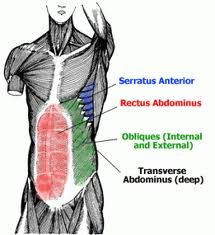
Thus, the rider must understand which pelvic position is correct, and then work on developing the muscles that provide this position (rectus, transverse and oblique muscles of the abdomen).
All of these develop naturally only if the rider tries to maintain a proper posture. If you allow the movement of the horse to move your body in the saddle, you will not be able to stay connected to the movements of the horse. That is why the work of the lunge rider is so important. It allows him to focus solely on his posture, on the correct position of his body. The rider does not have to control the movements of the horse and follow it.

The rider needs to concentrate only on himself in order to develop the correct posture on the horse.
Maintaining proper posture at first becomes a real challenge for many beginner riders. They feel insecure, out of balance. Added to this is the lack of control over the horse through the reins. Once on the lunge, the riders give up previously fixed mistakes, from the previous incorrect way of steering and incorrect landing. They feel uncomfortable and unsafe, but such training is absolutely necessary.
One of the benefits of lunging is developing the feeling of the horse on an intuitive level. Our perception of our own body while driving is greatly distorted. But while training on the lunge, you can focus on yourself and feel how the horse reacts to changes in position. your body. Your main goal is to achieve interaction with the horse, and that comes with developing the feeling of the horse. Unfortunately, there are a lot of misconceptions about how a rider should actually sit on a horse and how he should use his body. Using many riders and horses as examples, we studied how their position in the saddle affects the movements of the horse. And they drew many conclusions about the correct use of the body, instead of controlling the horse with the reins.
Correct rider posture = correct horse posture
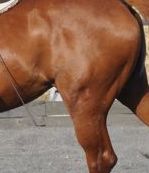
As your posture improves, you will begin to have a positive effect on your horse’s posture as well. The abdominal muscles, the muscles of the back, the neck, the back, the front, everything will be transformed. Your horse’s chest will even begin to take on a different shape – it will become muscled. The horse will begin to bring the hindquarters under the body more easily. The abdominal muscles will improve the horse’s ability to lift the back and bring the hindquarters in, and the hindquarters are the engine of the horse.
The more physically developed your horse becomes, the easier and more comfortable it will be for you. ride on it. Riding will become easy and enjoyable, the horse will begin to “read” your thoughts and obey the slightest signals. You will ride in contact and interaction, maintaining a unique connection between your body and the horse’s body.
Translation by Valeria Smirnova (source)
 Vagabond 2 2017 of August
Vagabond 2 2017 of AugustRussian-language version of the source site hht.ru Answer
 bleysha 8 2017 of August
bleysha 8 2017 of Augustgood article, thanks for the translation. however, I would like to see feminitives, since it is unpleasant to identify yourself with a man while reading. Answer
 Maria 8 2017 of August
Maria 8 2017 of AugustThe rider in this case sounds more impersonal than the rider. Yes, there are more riders, but there are also men among the readers. It would be much “stranger” for them to identify themselves with horsewomen … Answer
 bleysha 28 2017 of August
bleysha 28 2017 of Augustthe masculine gender is not gender neutral. he is male.
Is it normal for women to associate themselves with men? and if you understand that there are more women in equestrian sports, why refuse to target your content to a female audience? Answer
 Maria 29 2017 of August
Maria 29 2017 of AugustI believe that the essence of your question is far from riding. It can be addressed to psychologists. And for now (unfortunately or joyfully) we will remain within the framework of the requirements of the Russian language. Answer
 Valeria Smirnova 14th of October 2017
Valeria Smirnova 14th of October 2017The majority is, however, not all 100%. Men also read us, let’s not forget this. And if a woman can be called a “horseman”, “athlete”, “waiter”, “cosmonaut”, then a man is unlikely to be happy if he is called a “cosmonaut” in the text 🙂 Answer



